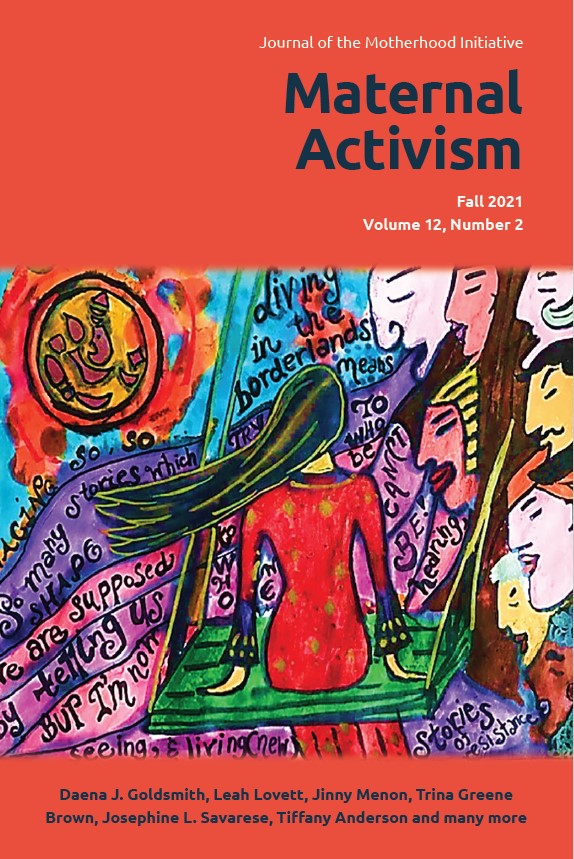Anishinaabeg Maternal Activism: We Sing a Prayer for the Water
Abstract
My Anishinaabeg maternal activism arises from the water songs of my ancestors and the women of my Anishinaabeg community. As Anishinaabeg women and mothers, our maternal activism around water and water rights is rooted in our interconnected relationship with the water as women and mothers. The traditional and modern rationale of maternal activism is rooted not only in treaty responsibilities but also in the nibi-dibaajimowinan, such as our sacred prayers and songs. Anishinaabeg mothers, women, and those LGBTTIQQ2S+ persons who identify on the female gender spectrum take up the of role of the water activists to honour and uphold their duties to the water. The activist role is really an extension of our traditional roles as carriers of the water (e.g., menstruation, pregnancy, or inside copper pails during our ceremonies) and keepers of the treaty rights of water. Activism for the water is not only like protecting a relative but also like protecting ourselves because we are not living well as human beings, Anishinaabeg, unless we care for the water that sustains us. Anishinaabeg maternal activism is born out of our water songs. In this article, I explore why Anishinaabeg mothers engage in activism for the water. I explore the traditional teachings that inform Anishinaabeg maternal relationships to water. I explain Anishinaabeg women’s path to activism through the teachings of women’s role in warriorship. Last, I share some traditional prayer songs for the water that have been publicly published and explain their importance to Anishinaabeg maternal activism in relation to activism for the sovereignty of Indigenous water rights, culture, health, and territory.
Downloads
Published
How to Cite
Issue
Section
License
All intellectual property in relation to material included on this site belongs to the Motherhood Initiative for Research and Community Involvement (MIRCI). All material on this site is protected by Canadian and international copyright and other intellectual property laws. Users may not do anything which interferes with or breaches those laws or the intellectual property rights in the material. All materials on the Motherhood Initiative for Research and Community Involvement (MIRCI) are copyrighted and all rights are reserved. Any reproduction, modification, publication, transmission, transfer, sale, distribution, display or exploitation of the information, in any form or by any means, or its storage in a retrieval system, whether in whole or in part, without the express written permission of the Motherhood Initiative for Research and Community Involvement (MIRCI) is prohibited. Please contact us for permission to reproduce any of our materials. This site may include third party content which is subject to that third party's terms and conditions of use.


